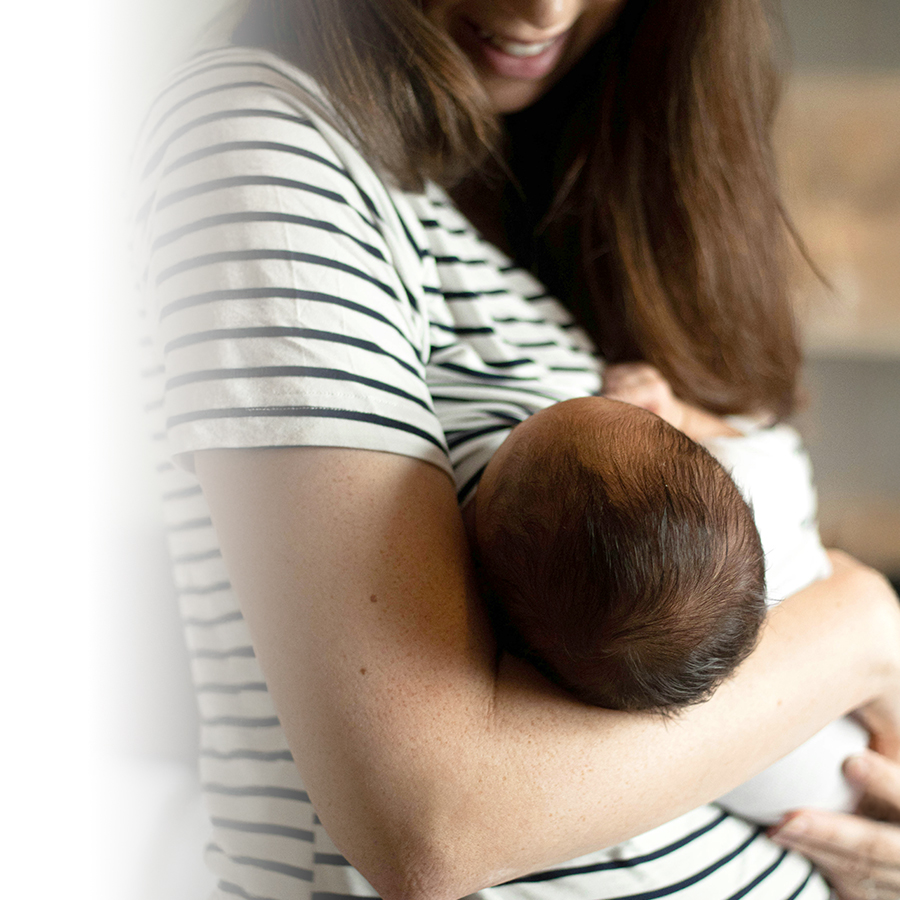For many mothers, breastfeeding is synonymous with well-being and emotional closeness with their baby. However, complications can arise and cast a shadow over the happy moments associated with breastfeeding. This is particularly true for women suffering from mastitis. Here is how to prevent and avoid such discomfort after childbirth.
What is mastitis?
Mastitis is an inflammation of the breast tissue that can affect one or both breasts of breastfeeding women.
There are different types of mastitis:
- Infectious mastitis, caused by bacterial invasion of the breast, usually from small cracks in the nipple.
- Non-infectious mastitis, mainly attributable to milk stasis (a stoppage or slowing down of milk flow), which can occur when a milk duct is blocked. In certain circumstances, non-infectious mastitis can evolve into an infectious form.
Having mastitis should not undermine your decision to breastfeed. Before giving up breastfeeding, be sure to consult a healthcare professional who can advise you on your specific situation.
Who is at risk of mastitis?
Although it can occur at any time during breastfeeding, mastitis is most often seen in the first six weeks after delivery. This condition is also more common in women who have had nipple lesions or whose breast has remained engorged with milk for too long.
Some causes of mastitis
Inadequate latching on is one of the main risk factors for mastitis, which is why it is so important to develop a good breastfeeding technique to avoid this condition. Weaning too quickly can also be a contributing factor. However, it is not clear why some women develop mastitis while others do not.
How can you tell if you have mastitis?
The most common signs and symptoms of mastitis include the following:
- Hardness, redness or swelling of any part of the breast;
- Breast tenderness or pain;
- A sensation of warmth in the breast;
- Nipple discharge;
- Fever;
- Muscle pain;
- Chills;
- General malaise;
- Flu-like symptoms.
Can mastitis heal on its own?
In most cases, mastitis is benign and heals on its own, sometimes even within 24 hours, especially with rest, adequate hydration, continued breastfeeding or milk extraction to avoid engorgement. However, medical consultation may be necessary in more severe cases. Whatever the type of mastitis, follow-up with a healthcare professional is recommended to ensure a safe and rapid recovery.
When should I see a doctor about mastitis?
We recommend that you seek prompt medical advice if you experience any of the following signs or symptoms:
- High fever lasting more than 24 hours;
- Blood leaking from the nipple;
- Intense pain that lasts throughout the feeding.
In the most serious cases, or if left untreated, mastitis can lead to complications such as breast abscess or septicemia (blood infection).
What treatment or antibiotics should I take for mastitis?
Prescription antibiotics may be necessary if you suffer from infectious mastitis. Your doctor will choose an antibiotic based on the type of infection, your state of health and whether or not you're breastfeeding. It's important to tell your doctor about your history of drug allergy, as antibiotics used in this context may be subject to them.
If you are taking an antibiotic, you should see an improvement in your symptoms within two to three days. It is essential that you take your medication as prescribed, until the end of the prescribed treatment period. If you don't see any improvement after 48 hours, contact your doctor.
No matter the type of mastitis, if you feel pain, you can take an analgesic available without a prescription (a product containing acetaminophen or ibuprofen for example). Always ask your pharmacist for advice before taking any over-the-counter medication, especially if you're breastfeeding.
Mastitis or inflammatory cancer? Check with a doctor!
Although mastitis is generally a benign condition associated with breastfeeding, it is essential not to confuse its symptoms with those of inflammatory breast cancer, which is much more serious, but much less common.
Both conditions can manifest as redness, pain and swelling of the breast. However, inflammatory cancer often presents more persistent symptoms and can include changes in skin texture, such as an orange peel appearance. In case of doubt or persistent symptoms, prompt medical consultation is imperative for accurate diagnosis and appropriate treatment.
What else can I do to prevent mastitis or breast engorgement?
If you are suffering from mastitis, here are some useful tips:
- First of all, don't stop breastfeeding. This would be of no benefit to you or your baby, and could even make the situation worse.
- Breastfeed more often (ideally eight to twelve times a day) and try to vary your breastfeeding positions.
- Consult a breastfeeding specialist to review your technique. It is important that breastfeeding is effective and that your breasts are emptied during feedings.
- Gently massage the affected breast while breastfeeding, using circular movements.
- Consider using a breast pump to remove excess milk after feeding, if necessary. You must avoid milk stasis.
- Apply warm compresses to the breast before each feed, and cold compresses between feeds.
- Wear a well-fitting bra, but not too tight.
- Rest. Breastfeeding can be exhausting, especially when you're experiencing difficulties.
- Stay hydrated by drinking plenty of water.
- Take your temperature regularly to check for fever.
Be sure to have the support you need
Mastitis can be just one of the obstacles standing in the way of a new mother. By being well informed, you can limit the extent and duration of its inconvenience. Ideally, feeding your baby in the most natural way possible should be a source of gentleness, not pain!
For more information on mastitis, talk to your pharmacist!

